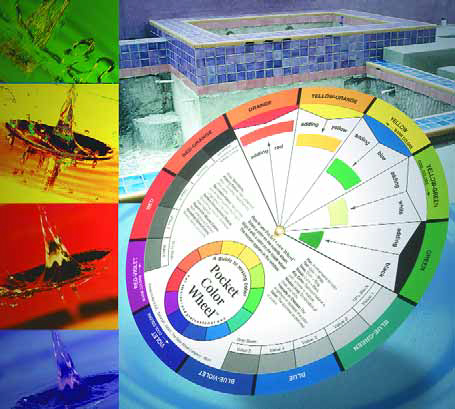color wheel
We live in a multi-dimensional world. Most people understand that space has three dimensions: height, width and depth. But relatively few people look at color in the same way - that is, as a three dimensional phenomenon. Understanding these three dimensions of color can become the key to unlocking your creativity as a designer. We began our study of color in LandShapes' May/June issue ("Designing in Color," click here), where we explored the scientific nature of color and its first dimension - hue, the name of a color (red, yellow, blue, orange, green or violet) - and learned that each hue has a temperature range (from warm to cool). We also learned that all six hues may be organized and better understood through the use of a helpful tool developed by color scientists called the color wheel. We will now continue our study of color by exploring the second and third dimensions of color and then by discussing contrast, analogous and complementary colors and color harmony. This will enable us to begin applying these fundamentals as landshapers and see in practical terms how understanding these fundamentals can help us become better
Even though color is literally everywhere, most people know surprisingly little about it. That's a knowledge gap designers in particular should overcome, says artist, colorist and teacher Judith Corona, who adds that understanding the nature of color, how it influences moods and emotions and how a color wheel works are all useful when it comes to making valuable recommendations to clients about their watershapes and landscapes.
Color is amazing. It provides us with some of greatest opportunities we ever have to create spaces that are emotionally evocative and visually compelling - yet it is also one of the most difficult design details to understand and put to good and effective use. Trouble is, there's no easy way to simplify the challenge: Color is indeed a tough nut to crack, and that's as true for architects, artists, fashion designers and the people who choose colors for new
I love the versatility of fiberoptic lighting: The technology works equally well in conjunction with landscaping or architectural features, and because there's no electrical current to worry about at the light fixtures themselves, they're a natural around water. Better yet, you can use fiberoptics to create traditional point-light sources, or you can set them up as mellow bands of light over long stretches. I don't use fiberoptics on every job, but when the situation is right and the customer is willing, I'm eager to dig in and design a system that will wow them for years to come. As is true with any lighting system, the main reason to use fiberoptics is
















